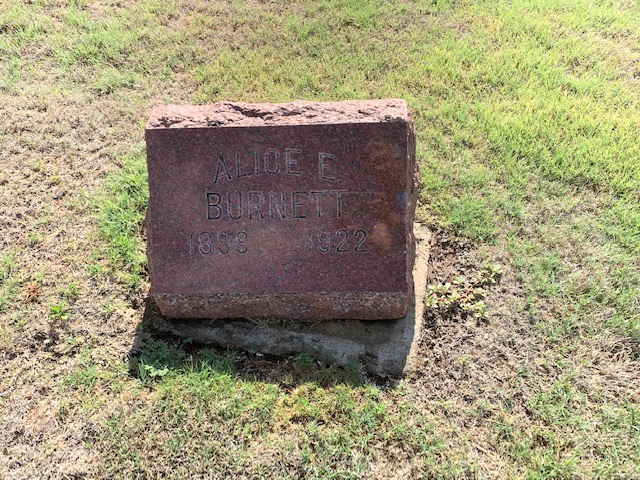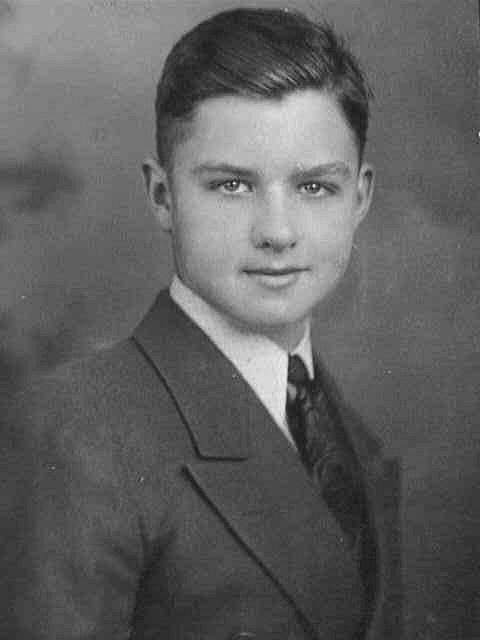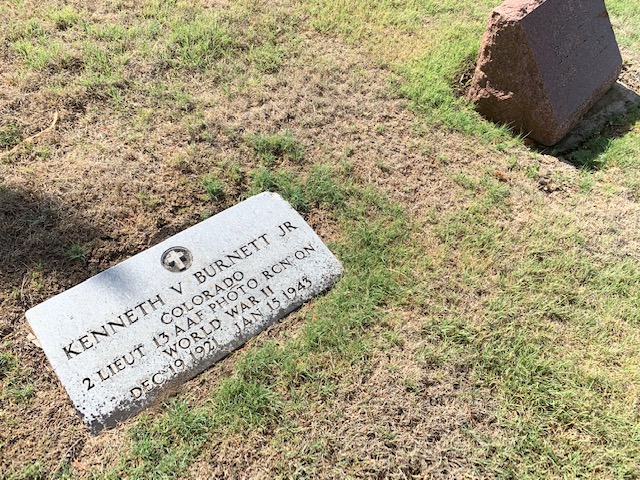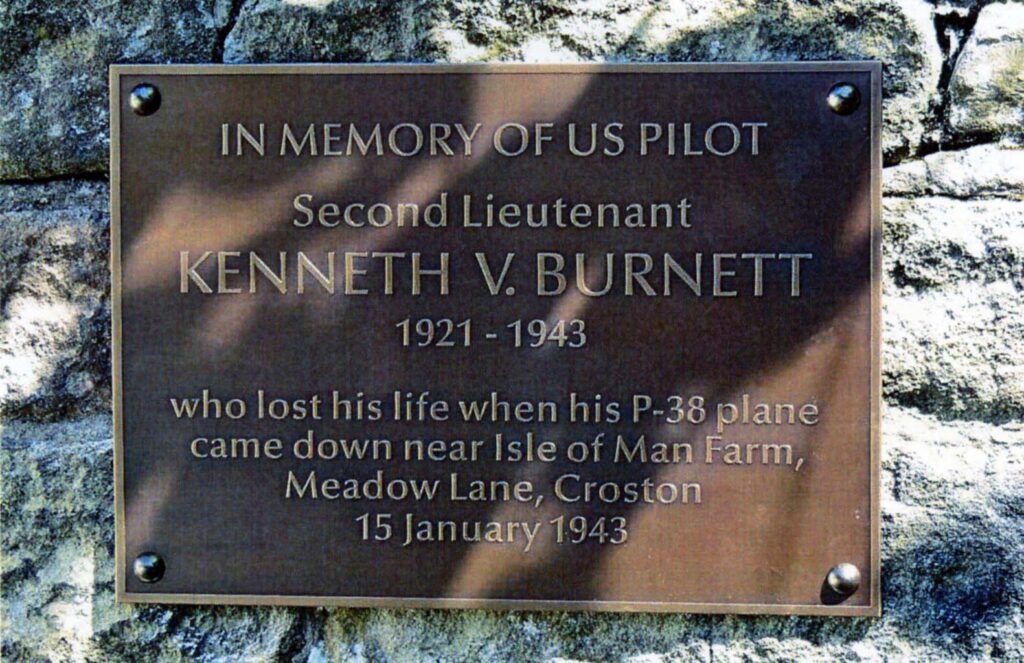Last month, in the English village of Croston, population 2,917 and 4,500 miles from Kinsley, the death of a young man was remembered. A plaque was installed in his honor on a wall next to the town’s memorial for the village men who had died in World War II. But the dedication ceremony planned for VE day, May 8, 2020, had to be cancelled because of the corona virus.
You’re probably wondering why I’m writing about this. Who was this man being honored in an English village?
His name was Kenneth V. Burnett, Jr., and he was born in Kinsley on December 19, 1921. His parents were Kenneth V. Burnett, Sr. and Alice Dixon Burnett, a 1917 Kinsley High School graduate who became a teacher and taught one year at Columbia School in Omar located a few miles east of Kinsley (Hwy 50 & south of 140 Ave.)
The first tragedy of Ken’s life happened when he was only 18 days old and his mother died of peritonitis. Alice was only 23 years old and had not yet celebrated her second wedding anniversary.

Alice died in the Kinsley home of her parents, Frank and Emma Dixon. They took on the responsibility of raising the baby. But tragedy struck again when Ken was 14 years old and his grandfather died.
Ken then moved to live with his father and stepmother in Pueblo, Colorado. He graduated from high school there in 1938, went to junior college, and worked.

Ken enlisted as a US Air Corps Aviation Cadet on November 8, 1941. On December 1, 1942, Second Lieutenant Burnett was assigned as a pilot with the US AF 8th Division, the 13th Photographic Reconnaissance Squadron and headed to England.
Not two months later, in January, 1943, Ken’s father received the telegram informing him that his son had been killed “in an accident on foreign soil.” The manner of his death was obscured by the war, but twenty years ago Nick Wortherspoon was able to discover the story of the young pilot who crashed near Croston on the bank of the River Douglas on January 15, 1943.
On that day, Burnett and another pilot, 1st Lieutenant A.C. Vernon Luber, had volunteered to ferry two new P-38s back to their base with Second Lieutenant Otto Hloucal leading them in a new P-47. Hloucal knew the area while Burnett had just recently arrived in England.
When they took off, Burnett got separated from the other two. It was a cold, gray late afternoon with a low lying mist. Witnesses around Croston could hear his plane circling above as evening came on. It was obvious that the pilot was lost. One witness told Wotherspoon that it looked “like the pilot was attempting a forced landing over the River Douglas, just outside the Village of Croston. However, the aircraft turned steeply in the last moments and made an apparent attempted, wheels down, landing, in the field immediately bordering the river. With the aircraft close to the ground the wingtip struck an area of brush and the pilot ‘gunned’ his engines in an attempt to gain lift.”
Instead of rising the plane went down hitting some large trees. It came apart, exploded, and burst into flames. After the fire was able to be extinguished, Ken Burnett’s body was removed to a mortuary. Soldiers arrived to guard the wreckage although most had been destroyed by the fire. Kenneth Burnett was buried at the Brookwood American Cemetery in Surrey, England.
Wotherspoon wrote of the incident, “Given the short time he was flying over this country it does not seem unreasonable to assume that this was yet another case clearly illustrating just how alien an environment the young newly trained US flyers must have found wartime Britain. With its difficult navigation and unpredictable weather, which could change so quickly and vary so widely from one location to another relatively close destination, it caught many such pilots unawares.”
Kath Almond of the Croston Village Archive recently wrote. “The Second World War was still raging. We had also lost many young men on land, sea and air. The plight of this young man was soon forgotten amidst our own troubles. That was over 75 years ago, and the incident has faded with the passing of time. The names of the men we lost from our village are named on our War Memorial, but Kenneth Burnett’s body was taken back to America in 1948 when his father applied for the body to be placed in the grave of his mother in Kansas. When it was mentioned that before the incident was lost in the mists of time, a plaque should be placed by our memorial in his memory, a local resident, who was 8 years old at the time of the crash, offered to pay for the plaque.”

So Kenneth came to his final rest in Hillside cemetery with his mother and a plaque on a wall in England honors his sacrifice.

Earlier this month, Kenneth Burnett’s second cousin, Nadene Snyder of Mesa, AZ, emailed me to see if we would be interested in this information for our archives. I thought I should share it with you. It is fitting that we remember the service of Lieutenant Kenneth Burnett just as the citizens of Croston Village do.
